Numerical Study on Fluid Flow Behavior and Heat Transfer Performance of Porous Media Manufactured by a Space Holder Method
Abstract
:1. Introduction
2. Numerical Model and Method
2.1. Model Construction
2.2. Physical Model
2.3. Governing Equation and Boundary Condition
2.4. Mesh and Solution
2.5. Pressure Drop
2.6. Heat Transfer Coefficient
3. Results and Discussion
3.1. Pressure Drop
3.2. Permeability and Friction Factor
3.3. Temperature Distribution
3.3.1. Effect of Flow Rate
3.3.2. Effect of Porosity
3.3.3. Effect of Pore Size
3.4. Velocity Distribution
3.4.1. Effect of Flow Rate
3.4.2. Effect of Porosity and Pore Size
3.5. Heat Transfer Coefficient
4. Conclusions
- (1)
- The effect of the number of model layers on the results is insignificant when the number of layers is equal to or greater than two. For the single-layer model, wall effects cannot be ignored, especially at high flow velocity.
- (2)
- The pressure drop increased with decreasing porosity and increasing pore size. The relationship between the pressure drop and flow velocity can be correlated based on the Forchheimer equation. Permeability increased and the form drag coefficient decreased with increasing porosity and both increased with increasing pore size, but the pore size effect on the form drag coefficient is stronger.
- (3)
- The laminar, transitional, and turbulent regimes were identified from the friction factor–velocity diagram. Low porosity and a small pore size results in a large friction factor. Flow in a large-pore-size model tends to become turbulent at a relatively low velocity.
- (4)
- Temperature distribution is largely affected by flow velocity and porosity. Fast-moving fluid and high porosity results in an extremely uneven temperature distribution. Particularly, at high velocity, only a small thickness of metal foam close to the heat source contributes to heat transfer.
- (5)
- Pore-scale velocity is hardly affected by porosity and pore size but is affected by flow rate. At high flow rates, vortices can be found in every pore.
- (6)
- The heat transfer coefficient increased exponentially with flow velocity and increased with decreasing pore size and porosity. However, at extremely low velocity (≤0.001 m/s), the effect of porosity and pore size on heat transfer is negligible.
- (7)
- The numerical results provide useful guidance for the design of metal foam heat exchangers. For example, increasing the thickness of porous media to a certain point no longer increases heat dissipation efficiency when the flow rate is high enough.
Author Contributions
Funding
Institutional Review Board Statement
Informed Consent Statement
Data Availability Statement
Acknowledgments
Conflicts of Interest
References
- Zhang, Y.; Hao, N.; Lin, X.; Nie, S. Emerging challenges in the thermal management of cellulose nanofibril-based supercapacitors, lithium-ion batteries and solar cells: A review. Carbohydr. Polym. 2020, 234, 115888. [Google Scholar] [CrossRef] [PubMed]
- He, Z.; Yan, Y.; Zhang, Z. Thermal management and temperature uniformity enhancement of electronic devices by micro heat sinks: A review. Energy 2021, 216, 119223. [Google Scholar] [CrossRef]
- Kim, J.; Oh, J.; Lee, H. Review on battery thermal management system for electric vehicles. Appl. Therm. Eng. 2019, 149, 192–212. [Google Scholar] [CrossRef]
- Zhang, X.; Li, Z.; Luo, L.; Fan, Y.; Du, Z. A review on thermal management of lithium-ion batteries for electric vehicles. Energy 2022, 238, 121652. [Google Scholar] [CrossRef]
- Huisseune, H.; De Schampheleire, S.; Ameel, B.; De Paepe, M. Comparison of metal foam heat exchangers to a finned heat exchanger for low Reynolds number applications. Int. J. Heat Mass Transf. 2015, 89, 1–9. [Google Scholar] [CrossRef]
- Samudre, P.; Kailas, S.V. Thermal performance enhancement in open-pore metal foam and foam-fin heat sinks for electronics cooling. Appl. Therm. Eng. 2022, 205, 117885. [Google Scholar] [CrossRef]
- Kuruneru, S.T.W.; Vafai, K.; Sauret, E.; Gu, Y. Application of porous metal foam heat exchangers and the implications of particulate fouling for energy-intensive industries. Chem. Eng. Sci. 2020, 228, 115968. [Google Scholar] [CrossRef]
- Holst, J.R.; Cooper, A.I. Ultrahigh Surface Area in Porous Solids; Wiley Online Library: Hoboken, NJ, USA, 2010. [Google Scholar]
- Huang, A.; He, Y.; Zhou, Y.; Zhou, Y.; Yang, Y.; Zhang, J.; Luo, L.; Mao, Q.; Hou, D.; Yang, J. A review of recent applications of porous metals and metal oxide in energy storage, sensing and catalysis. J. Mater. Sci. 2019, 54, 949–973. [Google Scholar] [CrossRef]
- Ashby, M.F.; Evans, T.; Fleck, N.A.; Hutchinson, J.; Wadley, H.; Gibson, L. Metal Foams: A Design Guide; Elsevier: Amsterdam, The Netherlands, 2000. [Google Scholar]
- Banhart, J. Manufacture, characterisation and application of cellular metals and metal foams. Prog. Mater. Sci. 2001, 46, 559–632. [Google Scholar] [CrossRef]
- Zhao, Y.Y.; Fung, T.; Zhang, L.P.; Zhang, F.L. Lost carbonate sintering process for manufacturing metal foams. Scr. Mater. 2005, 52, 295–298. [Google Scholar] [CrossRef]
- Lu, X.; Zhao, Y.; Dennis, D.J. Flow measurements in microporous media using micro-particle image velocimetry. Phys. Rev. Fluids 2018, 3, 104202. [Google Scholar] [CrossRef]
- Lu, X.; Zhao, Y. Effect of flow regime on convective heat transfer in porous copper manufactured by lost carbonate sintering. Int. J. Heat Fluid Flow 2019, 80, 108482. [Google Scholar] [CrossRef]
- Hu, X.; Gong, X. Pore-scale numerical simulation of the thermal performance for phase change material embedded in metal foam with cubic periodic cell structure. Appl. Therm. Eng. 2019, 151, 231–239. [Google Scholar] [CrossRef]
- Panda, J.P.; Warrior, H.V. Numerical studies on drag reduction of an axisymmetric body of revolution with antiturbulence surface. J. Offshore Mech. Arct. Eng. 2021, 143, 064501. [Google Scholar] [CrossRef]
- Panda, J.P.; Kumar, B.; Kumar, M.; Patil, A.K. Influence of twisted tape length on the thermal performance of a heat exchanger tube. Numer. Heat Transf. Part A Appl. 2023, 83, 650–663. [Google Scholar] [CrossRef]
- Lu, T.J.; Stone, H.A.; Ashby, M.F. Heat transfer in open-cell metal foams. Acta Mater. 1998, 46, 3619–3635. [Google Scholar] [CrossRef]
- Boomsma, K.; Poulikakos, D.; Ventikos, Y. Simulations of flow through open cell metal foams using an idealized periodic cell structure. Int. J. Heat Fluid Flow 2003, 24, 825–834. [Google Scholar] [CrossRef]
- Kopanidis, A.; Theodorakakos, A.; Gavaises, E.; Bouris, D. 3D numerical simulation of flow and conjugate heat transfer through a pore scale model of high porosity open cell metal foam. Int. J. Heat Mass Transf. 2010, 53, 2539–2550. [Google Scholar] [CrossRef]
- Hu, C.; Sun, M.; Xie, Z.; Yang, L.; Song, Y.; Tang, D.; Zhao, J. Numerical simulation on the forced convection heat transfer of porous medium for turbine engine heat exchanger applications. Appl. Therm. Eng. 2020, 180, 115845. [Google Scholar] [CrossRef]
- Yang, K.; Liu, K.; Wang, J. Pore-scale numerical simulation of convection heat transfer in high porosity open-cell metal foam under rotating conditions. Appl. Therm. Eng. 2021, 195, 117168. [Google Scholar] [CrossRef]
- Gauna, E.A.; Zhao, Y. Numerical Simulation of Heat Transfer in Porous Metals for Cooling Applications. Metall. Mater. Trans. B 2017, 48, 1925–1932. [Google Scholar] [CrossRef]
- Zafari, M.; Panjepour, M.; Meratian, M.; Emami, M.D. CFD simulation of forced convective heat transfer by tetrakaidecahedron model in metal foams. J. Porous Media 2016, 19. [Google Scholar] [CrossRef]
- Zhao, Y. Stochastic modelling of removability of NaCl in sintering and dissolution process to produce Al foams. J. Porous Mater. 2003, 10, 105–111. [Google Scholar] [CrossRef]
- ANSYS Fluent, Relese 16.0. ANSYS, Inc. Available online: http://www.ansys.com/products/fluids/ansys-fluent (accessed on 1 May 2019).
- Zhao, C.; Tassou, S.; Lu, T. Analytical considerations of thermal radiation in cellular metal foams with open cells. Int. J. Heat Mass Transf. 2008, 51, 929–940. [Google Scholar] [CrossRef]
- Baloyo, J.M.; Zhao, Y. Permeability, Form Drag Coefficient and Heat Transfer Coefficient of Porous Copper. Heat Transf. Eng. 2021, 42, 670–682. [Google Scholar] [CrossRef]
- Darcy, H. LES FONTAINES PUBLIQUES de la Ville de Dijon: Exposition et Application des Principes à Suivre et des Formules à Employer Dans les Questions de Distribution D’eau: Ouvrage Terminé par un Appendice Relatif aux Fournitures D’eau de Plusieurs Villes, au Filtrage des Eaux et à la Fabrication des Tuyaux de Fonte, de Plomb, de Tôle et de Bitume; V. Dalmont: Paris, France, 1856; Volume 2. [Google Scholar]
- Diao, K.; Zhang, L.; Zhao, Y. Measurement of tortuosity of porous Cu using a diffusion diaphragm cell. Measurement 2017, 110, 335–338. [Google Scholar] [CrossRef]
- Solórzano, E.; Reglero, J.A.; Rodríguez-Pérez, M.A.; Lehmhus, D.; Wichmann, M.; de Saja, J.A. An experimental study on the thermal conductivity of aluminium foams by using the transient plane source method. Int. J. Heat Mass Transf. 2008, 51, 6259–6267. [Google Scholar] [CrossRef]
- Kumar, P.; Topin, F. Different arrangements of simplified models to predict effective thermal conductivity of open-cell foams. Heat Mass Transf. 2017, 53, 2473–2486. [Google Scholar] [CrossRef]
- Gopinathan, A.; Jerz, J.; Kováčik, J.; Dvorák, T. Investigation of the relationship between morphology and thermal conductivity of powder metallurgically prepared aluminium foams. Materials 2021, 14, 3623. [Google Scholar] [CrossRef]

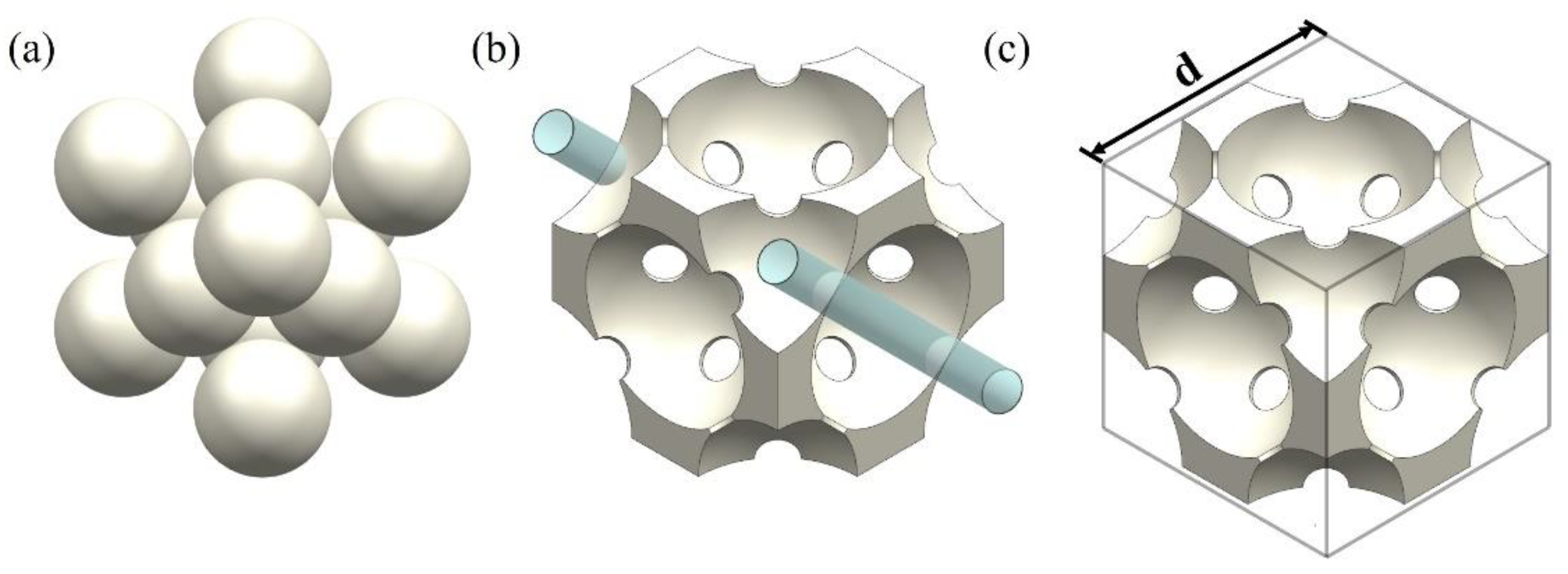
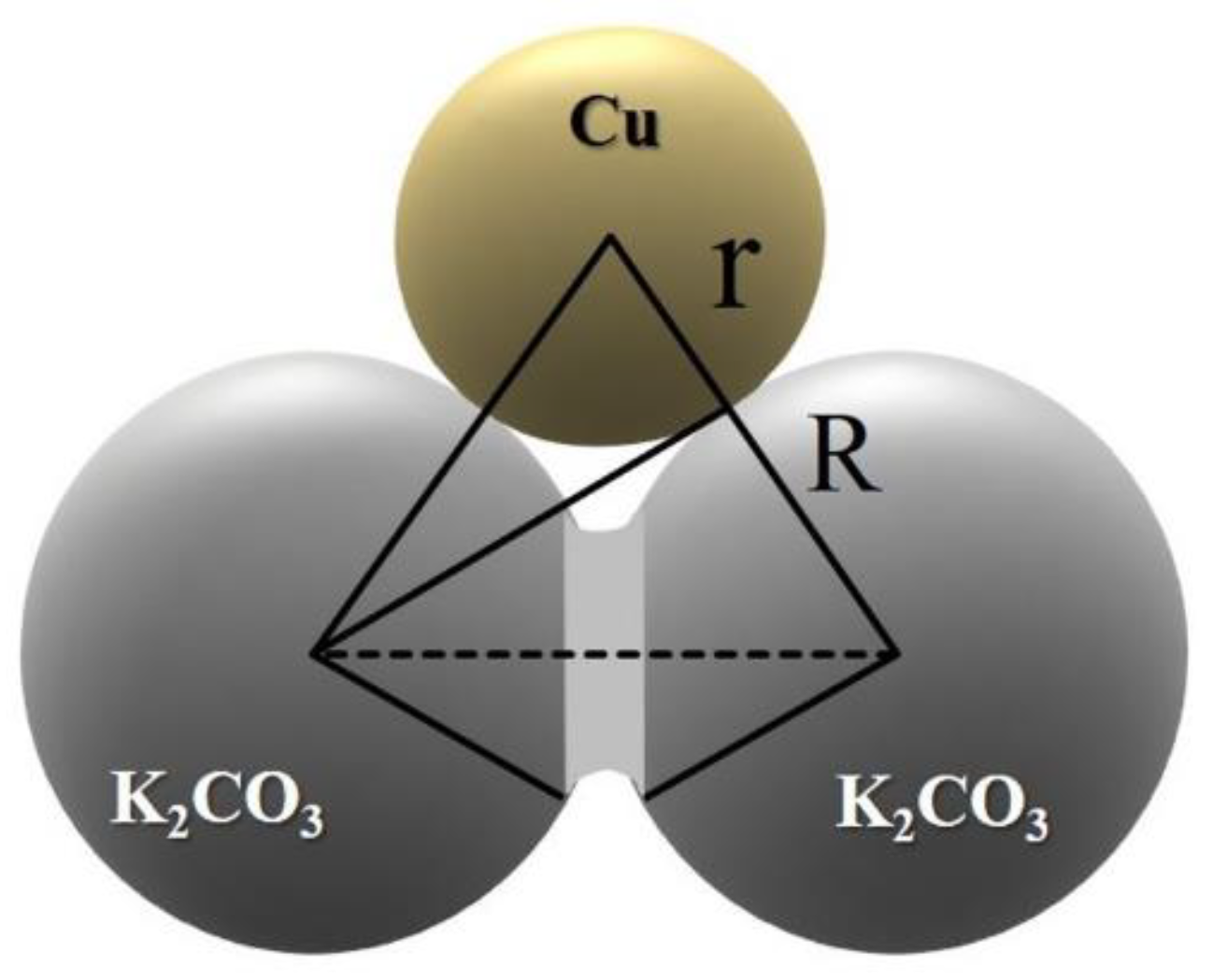
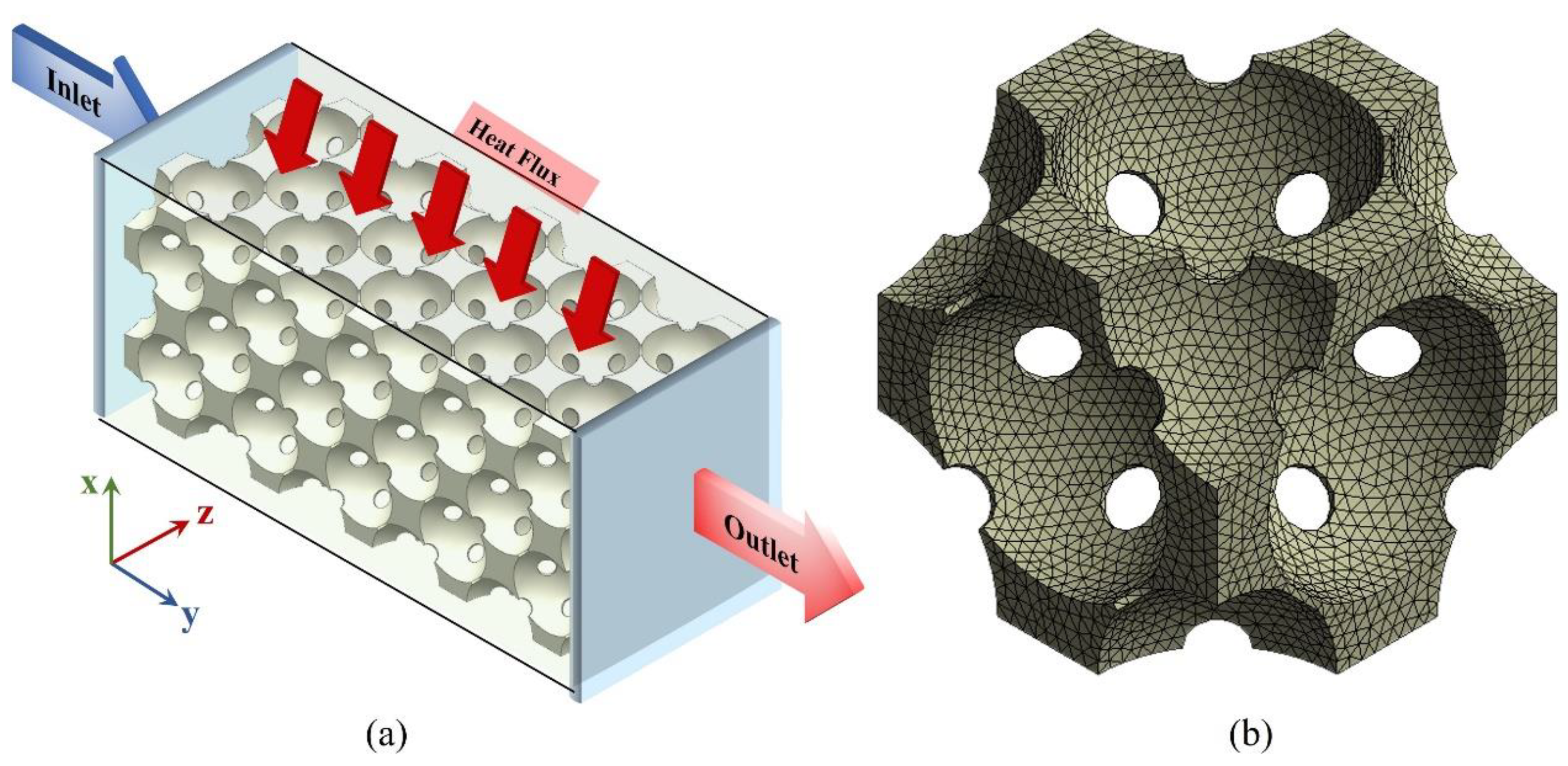
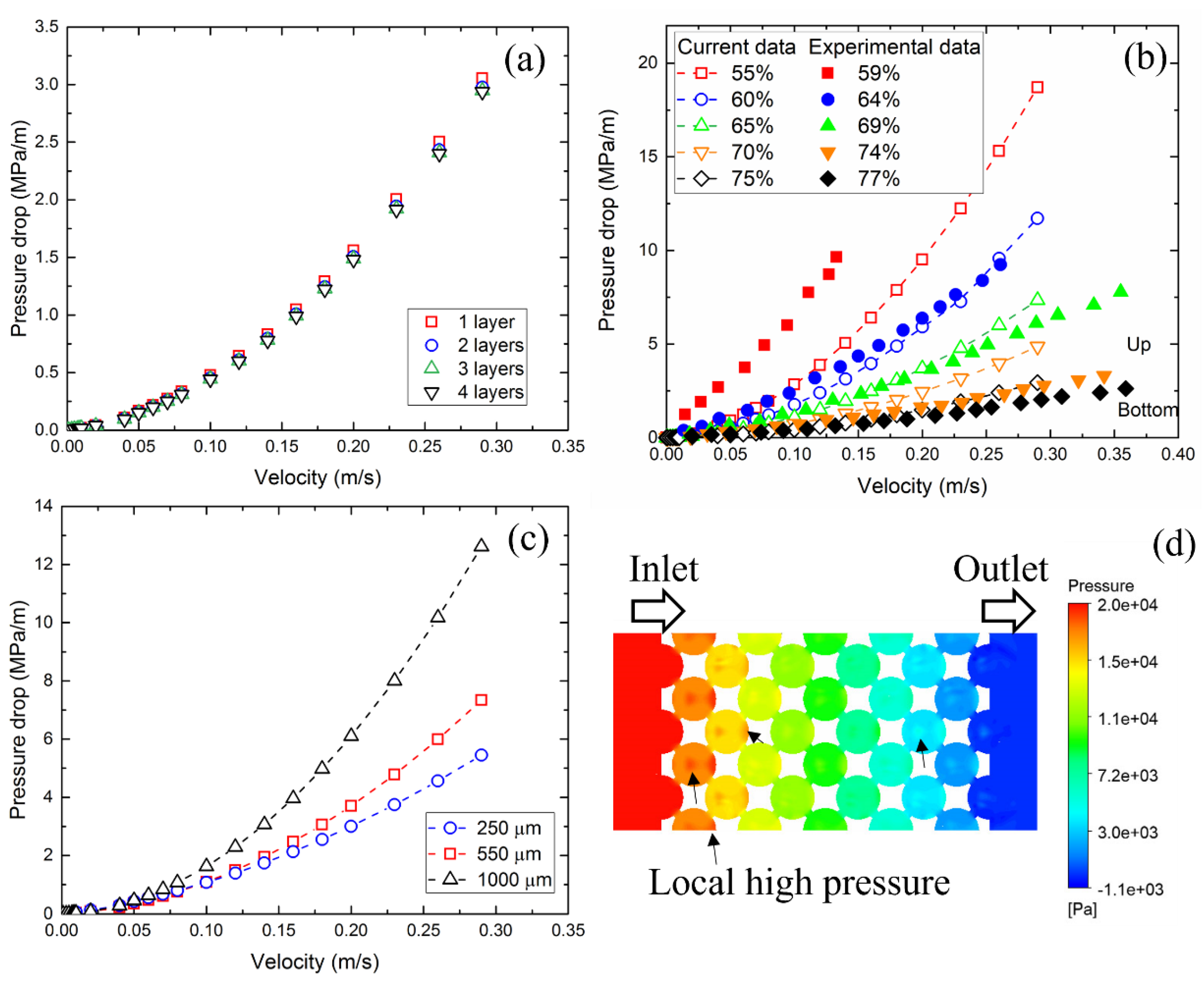
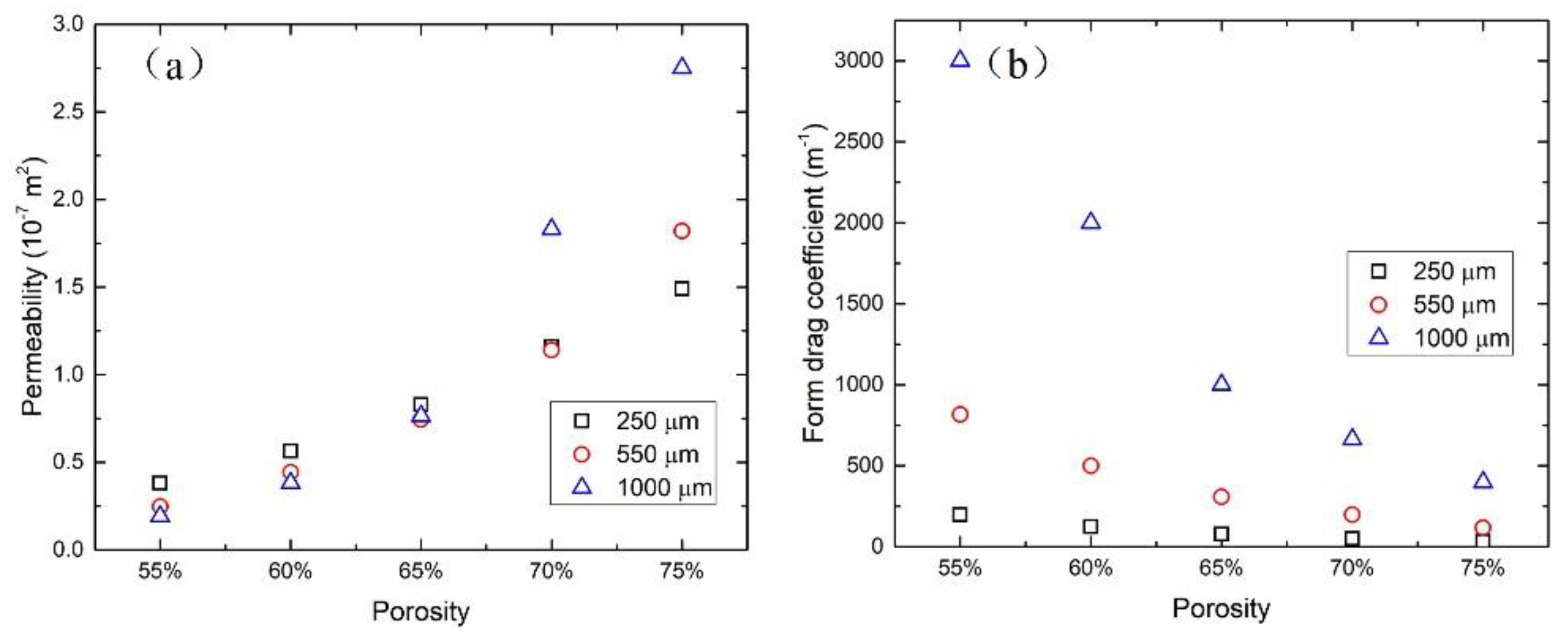
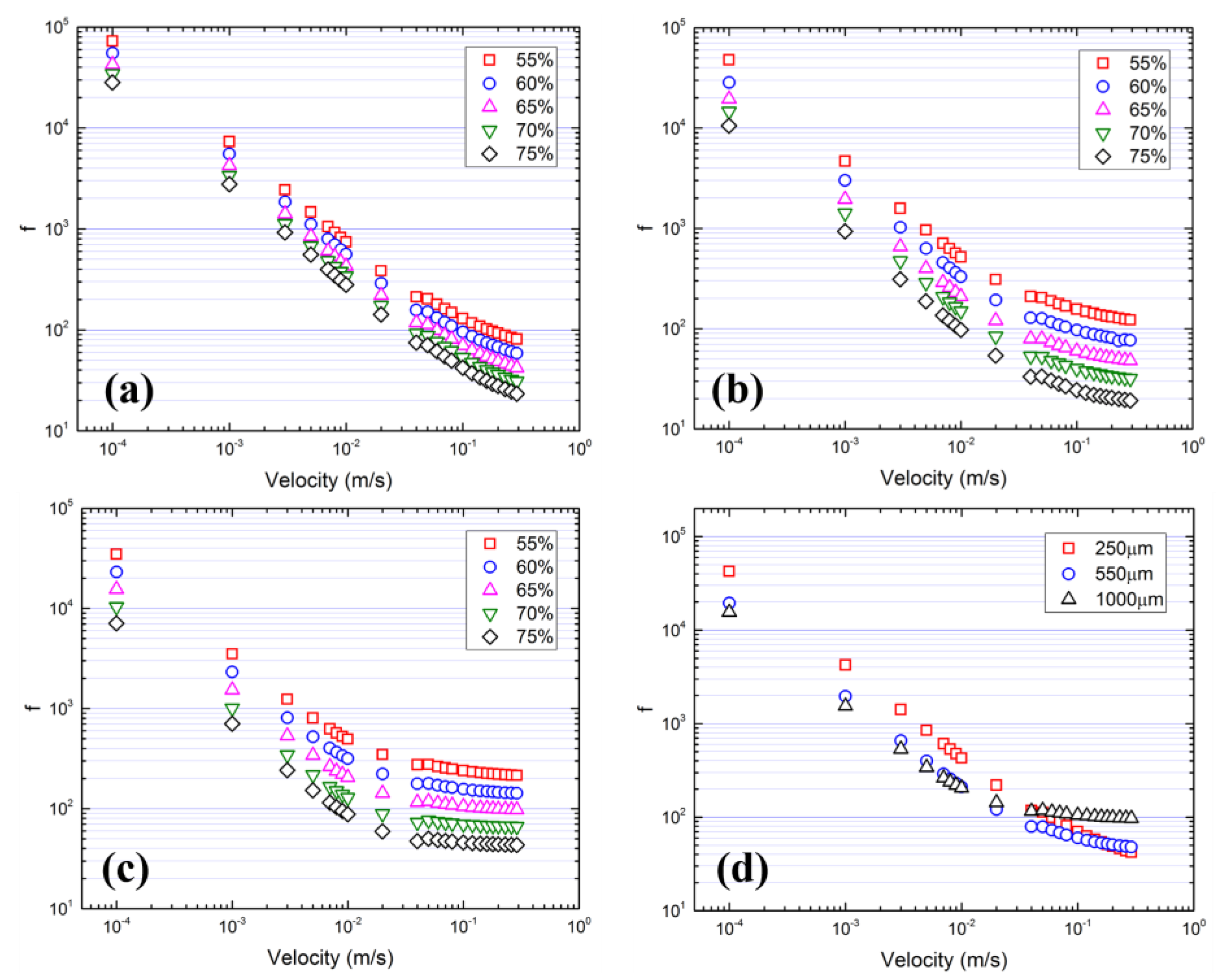
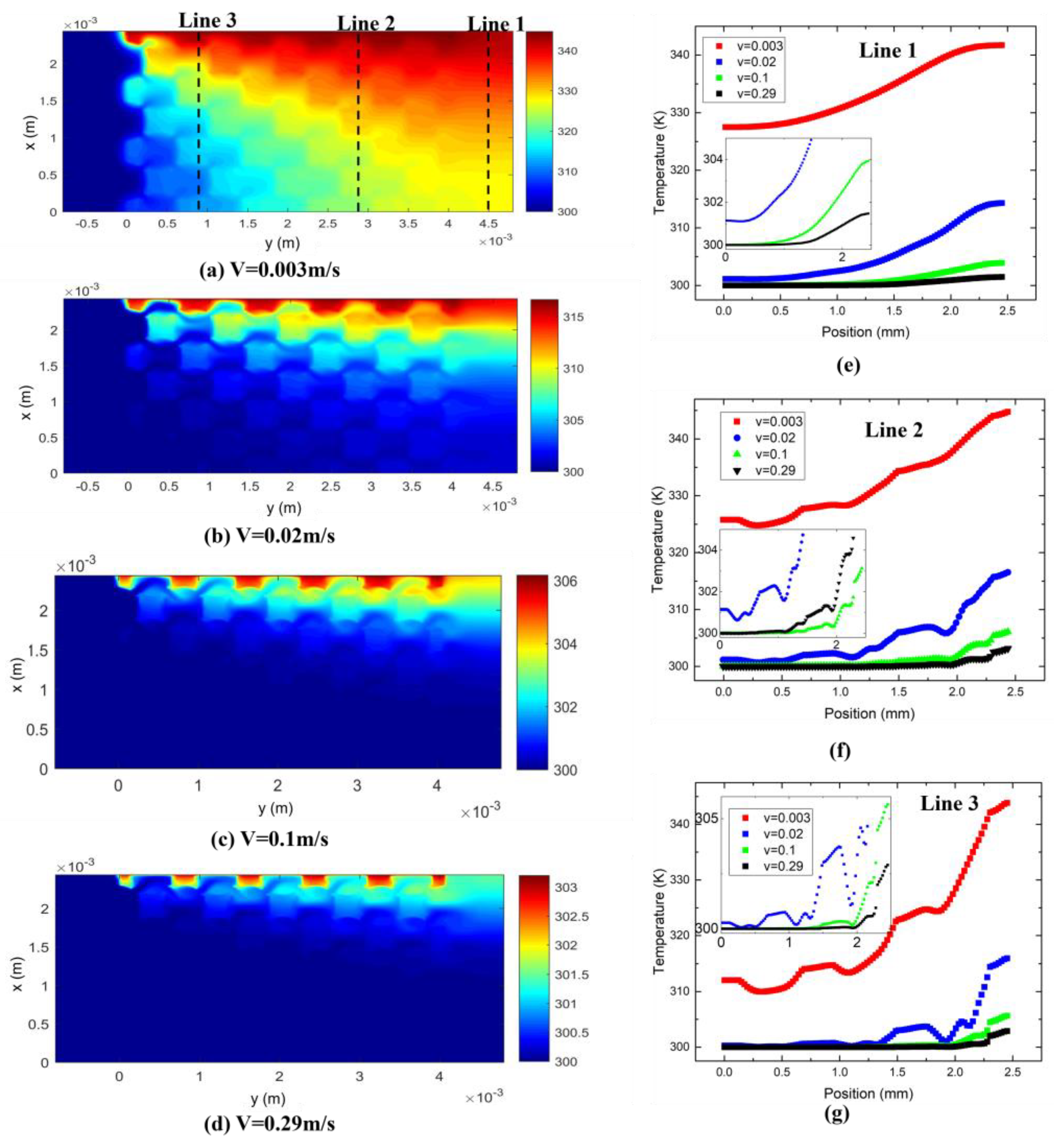



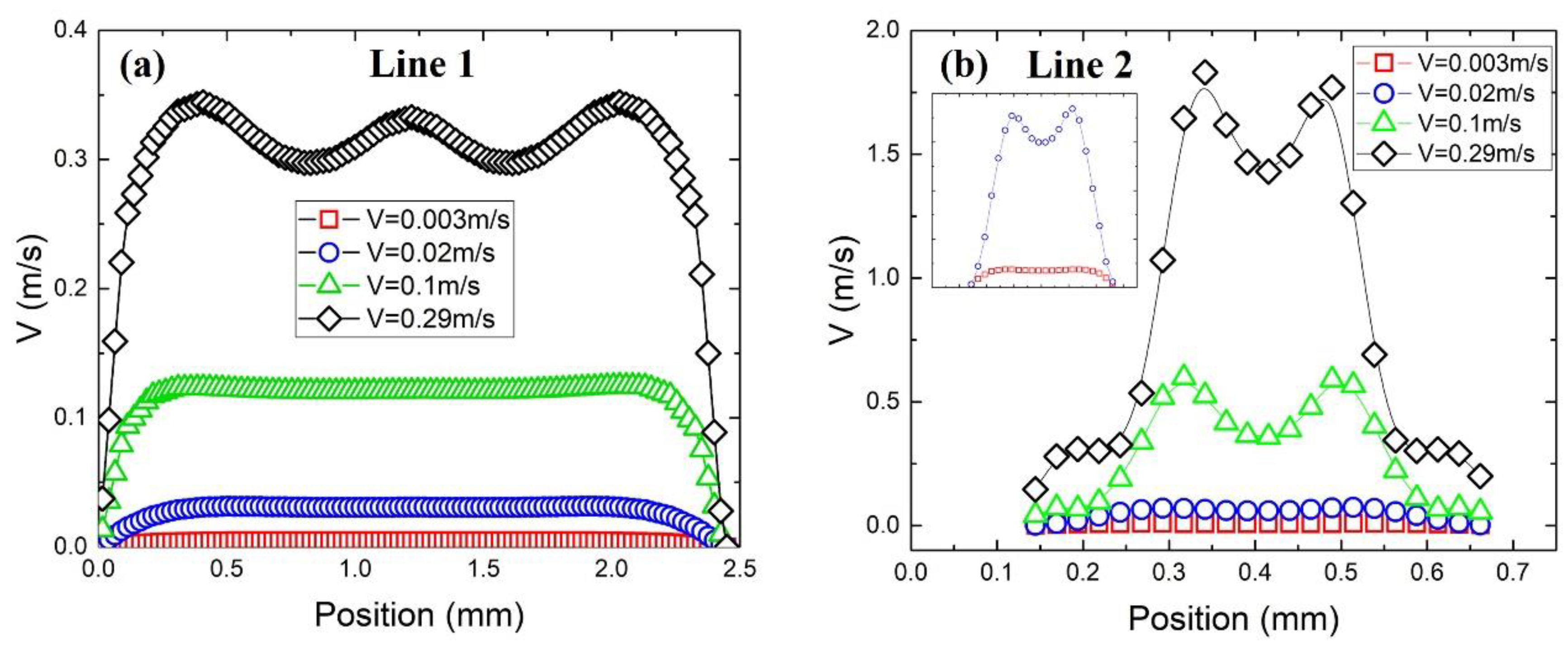


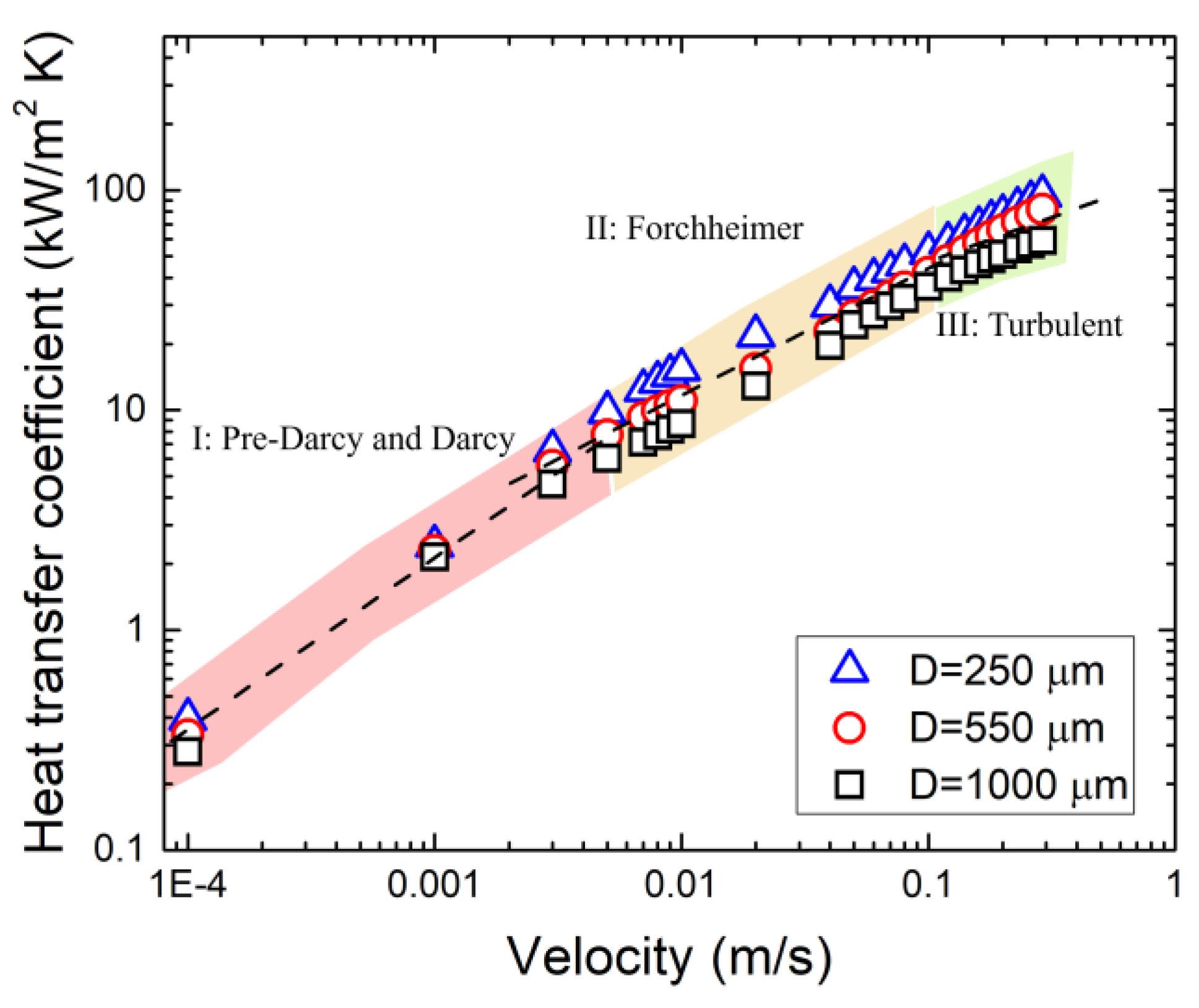
| Porosity | 55% | 60% | 65% | 70% | 75% | |||||
|---|---|---|---|---|---|---|---|---|---|---|
| lp | rc | lp | rc | lp | rc | lp | rc | lp | rc | |
| 250 μm | 26.0 | 32.0 | 18.2 | 34.7 | 11.1 | 37.6 | 4.7 | 40.7 | 1.1 | 44.2 |
| 550 μm | 57.3 | 50.2 | 39.9 | 55.0 | 24.4 | 60.3 | 10.4 | 66.4 | 2.3 | 73.5 |
| 1000 μm | 104.2 | 69.3 | 72.6 | 76.2 | 44.4 | 84.1 | 18.9 | 93.3 | 42.6 | 104.3 |
| Boundary Name | Boundary Condition |
|---|---|
| Top surface | Constant heat flux |
| Front surface | Symmetric |
| Back surface | Symmetric |
| Bottom surface | Zero heat flux |
| Pore Size | ||||||
|---|---|---|---|---|---|---|
| 250 μm | 550 μm | 1000 μm | ||||
| Porosity | K × 10−7 (m2) | C (m−1) | K × 10−7 (m2) | C (m−1) | K × 10−7 (m2) | C (m−1) |
| 55% | 0.38 | 197.3 | 0.25 | 816.6 | 0.19 | 3000.0 |
| 60% | 0.56 | 124.5 | 0.44 | 499.3 | 0.38 | 2000.0 |
| 65% | 0.83 | 78.2 | 0.74 | 308.2 | 0.76 | 1000.0 |
| 70% | 1.16 | 49.9 | 1.14 | 198.7 | 1.83 | 663.5 |
| 75% | 1.49 | 32.1 | 1.82 | 117.9 | 2.75 | 397.9 |
Disclaimer/Publisher’s Note: The statements, opinions and data contained in all publications are solely those of the individual author(s) and contributor(s) and not of MDPI and/or the editor(s). MDPI and/or the editor(s) disclaim responsibility for any injury to people or property resulting from any ideas, methods, instructions or products referred to in the content. |
© 2024 by the authors. Licensee MDPI, Basel, Switzerland. This article is an open access article distributed under the terms and conditions of the Creative Commons Attribution (CC BY) license (https://creativecommons.org/licenses/by/4.0/).
Share and Cite
Lu, X.; Zhao, Y.; Zhang, Y.; Wu, M. Numerical Study on Fluid Flow Behavior and Heat Transfer Performance of Porous Media Manufactured by a Space Holder Method. Materials 2024, 17, 2695. https://doi.org/10.3390/ma17112695
Lu X, Zhao Y, Zhang Y, Wu M. Numerical Study on Fluid Flow Behavior and Heat Transfer Performance of Porous Media Manufactured by a Space Holder Method. Materials. 2024; 17(11):2695. https://doi.org/10.3390/ma17112695
Chicago/Turabian StyleLu, Xianke, Yuyuan Zhao, Yue Zhang, and Mian Wu. 2024. "Numerical Study on Fluid Flow Behavior and Heat Transfer Performance of Porous Media Manufactured by a Space Holder Method" Materials 17, no. 11: 2695. https://doi.org/10.3390/ma17112695






